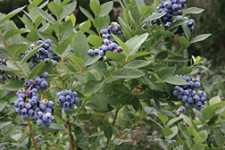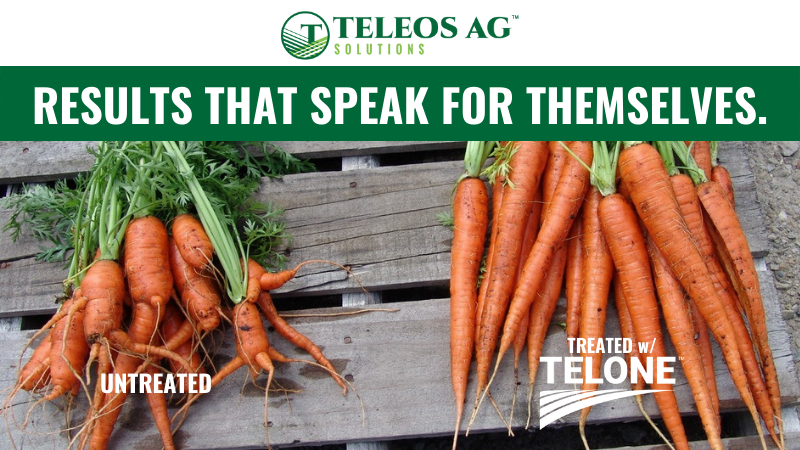
Two types of blueberries are grown in Florida: southern highbush and rabbiteye. The earliest southern highbush cultivars ripen about four to six weeks earlier than the earliest rabbiteye cultivars grown at the same location. Southern highbush blueberries are the basis for the current commercial blueberry industry in Florida because they ripen during the lucrative April-May market window. Rabbiteye production in Florida is primarily limited to local roadside and U-pick markets.
Southern highbush blueberries were developed by crossing northern highbush cultivars from Michigan and New Jersey with wild blueberries native to Florida and other southeastern states. The first three southern highbush cultivars were released from the University of Florida in the mid 1970s. Since then, many newer and improved southern highbush cultivars have been released. All the cultivars described here are patented by the University of Florida and require licensing for legal propagation. License information can be obtained from the Florida Foundation Seed Producers at http://ffsp.net.
Emerald
Emerald (USPP #12,165) was released by the University of Florida in 1999 and is currently the most widely planted cultivar in peninsular Florida. Emerald combines a vigorous bush with high-yield potential and high-quality berries. In Gainesville, Emerald blooms relatively early, normally reaching full bloom in mid-February. About 90% of the fruit of Emerald typically ripen between April 19 and May 15 in Gainesville.
Jewel
Researchers on Path To Make Apple Blossom Thinning Easier
Jewel (USPP #11,807), released in 1998, has a moderately low chilling requirement, early ripening high-quality berries, and a high-yield potential. In Gainesville, Jewel typically flowers in mid-February and begins ripening in mid-April with harvest normally complete by mid-May. Berry quality is excellent but berries tend to be tart until fully ripe. Berry size is typically slightly smaller than Emerald but firmness and scar are good to excellent. Jewel is moderately susceptible to Phytophthora root rot and more susceptible to leaf rust than most cultivars. It is often planted in combination with Emerald in Central and South-Central Florida.
Star
Star (USPP #10,675) was released by the University of Florida in 1995. Star holds its winter dormancy relatively well and is less likely than most cultivars to bloom in January or early February. Average date that Star reaches 50% bloom in Alachua County is February 23, a few days behind Emerald or Jewel. However, due to its very short bloom-to-ripe interval, and a relatively compressed harvest period of about three weeks, the first half of the berries are normally ripe by April 26 in Gainesville. Berries are excellent in size, firmness, and scar. Star appears to be best adapted to North Florida and southeastern Georgia. Star has not performed well south of Ocala where it tends to produce few flowers and has weak growth. In recent years, two diseases (Xylella and “funky spot”) have reduced vigor and yield in some plantings of Star. Both diseases can be propagated through cutting wood, and it is important to recognize symptoms of these diseases to avoid taking cuttings from plants that are obviously infected.
Windsor
Windsor (USPP #12,783) is vigorous, with stout stems and a semi-spreading growth habit. The average date of 50% open flowers in Alachua County is about February 23, similar to Star. Windsor leafs out strongly as it begins to flower, and this strong leafing enables it to support a large crop. In Alachua County, the first commercial hand harvest on Windsor (10% of the crop ripe) averages about April 15, and 50% of the berries are normally ripe by April 28. Windsor berries are very large with fruit from the first half of the harvest averaging about 2.4 grams on young vigorous plants. The berries are firm with excellent flavor. Although Windsor grows and fruits well, it has lost favor among some growers because of the deep picking scar which complicates packing and reduces postharvest life.
Sweetcrisp
Aptly named, Sweetcrisp (USPP #20,027) produces very firm, crisp-textured berries with excellent flavor and exceptional postharvest life. The plant is large, vigorous, and somewhat sprawling with good field survival. It flowers at about the same time as Jewel and ripens with Jewel and Emerald. The main limiting factor with Sweetcrisp is yield potential that is only medium compared to heavier yielding varieties like Emerald. Sweetcrisp is still being evaluated as to its potential for mechanical harvesting. It appears not to be adopted south of Gainesville due to higher chilling requirement.
Primadonna
Primadonna (USPP #20,181) is a vigorous plant that potentially produces large, high-quality, early-ripening berries, but, as its name implies, it is hard to manage. Flower buds are easily killed with Dormex (hydrogen cyanamide, Dormex Co. USA), but the chilling received in Florida often is insufficient to ensure good leafing without the use of one of the dormancy breaking compounds. Growers who achieve both good flowering and good leafing are rewarded with early berries that are large and easy to pick and pack. In North Florida, Primadonna survives well in the field and re-grows vigorously after summer topping.
Snowchaser
Snowchaser (USPP #19,503) is a relatively new release that extends the harvest season by ripening extremely early. It is the only variety for which commercial harvest normally begins during the first week of April in Gainesville (20 days earlier than Star). However, very early freeze protection is needed to achieve this early harvest. Snowchaser is highly vigorous, but susceptible to stem blight, which limits its field survival. Marginal field survival and its tendency to produce too many flowers in fall and winter have limited its use in Florida.
Springhigh
Springhigh (USPP #16,404) is a vigorous, upright plant that has shown good field survival. Springhigh is productive and sets heavy crops, even when pollination conditions are poor. Its berries ripen early — about nine days before Star. However flowering also is early, about five days before Emerald. The harvest period is typically concentrated in a three to four week window. Berry quality is good but not exceptional due to darker color and low firmness, but acceptable for an early-season berry.
Farthing
Farthing (USPP #19,341) is a newer cultivar that shows good potential but has not yet withstood the test of time. It is vigorous and survives well under good commercial management. It flowers later than Emerald or Jewel but not as late as Star and Windsor. The berries ripen at about the same time as Star, Windsor, and Emerald. Farthing produces many flowers and has a high-yield potential, but a somewhat protracted harvest season similar to Emerald. Berry firmness is very good and flavor and scar are good although color tends to be darker than most cultivars. Farthing performs well in North-Central Florida and its adaptation to Central and South-Central Florida is being evaluated.
Emerald, Jewel, and Star currently comprise the majority of commercial blueberry acreage in Florida. Plantings of Star are primarily limited to areas north of Ocala. The other cultivars described above are usually planted in smaller quantities to fulfill a specific need such as earliness, improved shelf-life, pollination, or for comparison against older established cultivars. In Florida, cold protection is required for reliable production of any southern highbush planting. Additional cultivars will continue to be released from the University of Florida breeding program and no doubt the cultivar situation will continue to evolve in the future.
0
1
5
Counting On Blueberry Cultivars
Jeff Williamson is a UF/IFAS professor and blueberry Extension specialist based in Gainesville.
See all author stories here.
James W. Olmstead, a longtime UF/IFAS professor of blueberry breeding and genetics, is now the Global Blueberry Breeding Director at Driscoll's. See all author stories here.










